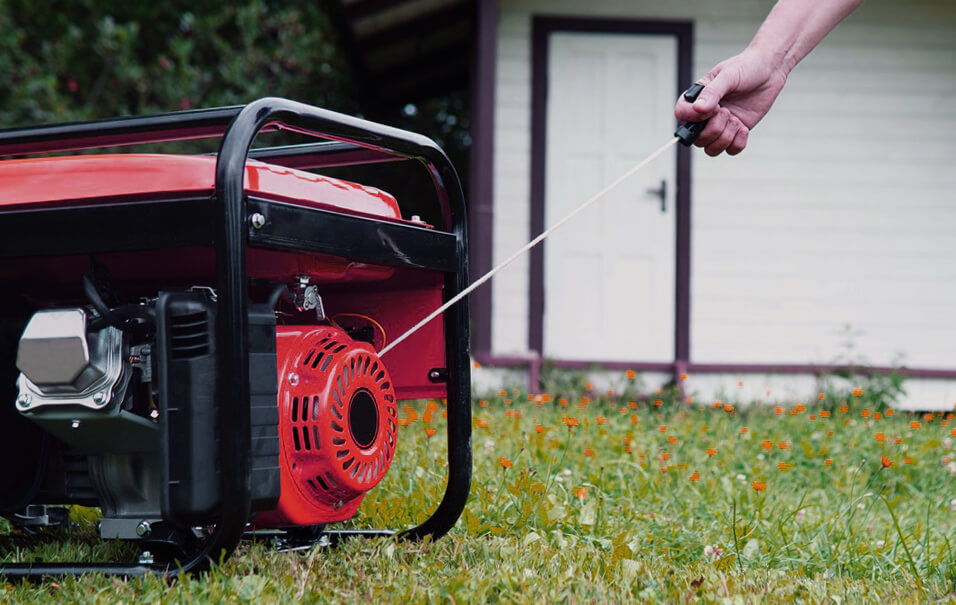15Jul 2023
table of contents
winter is here. As temperatures drop, many of us will be stockpiling our small engines — from riding mowers to chainsaws, generators to high pressure washers. But how can we ensure that these machines are ready to come back to life when spring arrives? BISON, one of the leading small engine manufacturers, offers the following step-by-step guide to winter engine storage preparation.

For small engines, proper winter storage is not just a matter of convenience, it is a matter of machine longevity. Not preparing your machine for cold months can cause damage. This may lead to expensive repairs. Or, you might need a replacement come spring.
Leaving fuel in the tank during the winter can lead to a buildup of gummy deposits or varnish-like residue in the fuel system. This can clog the carburetor, causing difficult starting or running problems. Additionally, moisture can condense in the tank and cause rust, further complicating the problem. Improperly stored engines can also experience dry seals, corrosion and a dead battery.
Read on to learn more about the storage preparation process!
Step 1: Empty the Fuel Tank
First empty the fuel tank. You can do this by pouring the gas into a suitable container or by running a small gasoline or diesel engine until all the fuel is used up.
Step 2: Add Premium Gasoline and Fuel Stabilizer
Next, add a few ounces of premium high-test gasoline to the tank. Then add a few ounces of fuel stabilizer. This addition is essential to protect the fuel system during storage.
Step 3: Run the Small Engine
Initiate the operation of the small engine and allow it to function for approximately 10-12 minutes. This action ensures that the stabilizer circulates throughout the fuel system, preventing it from clogging or sticking.
Step 4: Let the Stabilizer Dissolve the Ethanol Residue
Turn off the small engine and wait about 20 minutes. This waiting period gives the stabilizer time to dissolve any ethanol residue left in the engine and fuel lines.
Step 5: Start the Small Engine Again
After waiting a while, start the small engine again and let it run until all the gas is used up. This allows the stabilizer to work effectively.

Step 6: Drain Remaining Fuel
Some fuel might remain in the carburetor tank. Open the bowl's drain plug to address this. Unscrew the plug. Let any leftover fuel drain out.
Step 7: Indoor Storage
Finally, store BISON small engines indoors in a dry place away from the elements. This keeps it in top condition for use when the warmer months arrive.
In addition to emptying the fuel system, there are a few additional steps you should take to prepare your small engine to start:
Renew Your Fuel
The first step in restoring a BISON small engine after storage is to add fresh gasoline. Old gasoline can degrade over time, leading to potential engine damage. By supplementing with fresh gas, you can give the engine the best starting results.
Oil Change
Just as important as fresh fuel, the oil in a BISON small engine must be changed. Oil can get dirty over time with dirt, metal bits, and other debris. This can harm the engine. An oil change keeps your small engine clean and lubricated. It prepares it for use.
Check Fuel Filter
Next, check the fuel filter. A clogged fuel filter can cause engine problems, including poor performance and increased fuel consumption. Keep your BISON Small Engine running at its best by changing the fuel filter if necessary.
Air Filter Replacement
Over time, your BISON small engine's air filter can become dirty, restricting airflow and reducing overall performance. It's best to change the air filter before storing the engine so it's ready to go when you need it.
Check Spark Plugs
Worn or dirty spark plugs can cause a host of problems, from difficult starting to misfires and poor fuel economy. Checking and, if needed, replacing spark plugs will help your BISON small engine start smoothly and run efficiently.
Lubricate Moving Parts
To prevent rust and ensure smooth operation, lubricate all moving parts of your BISON small engine. This simple step can significantly extend the life of your engine.
Charge the Battery
If your BISON small engine has a battery, it may lose power during several months of storage. Try charging it. If it fails to charge, consider opting for a replacement.
Perform these winter storage methods and pre-start moves. It ensures your BISON small engine is prepared for any upcoming tasks.
All in all, properly storing your small engine for winter is beneficial. It prevents spring issues, saving you trouble. It also prolongs your machine's life, which saves you money over time.
inquiry form here
BISON BLOG, All the latest news and views from Bison Machinery.